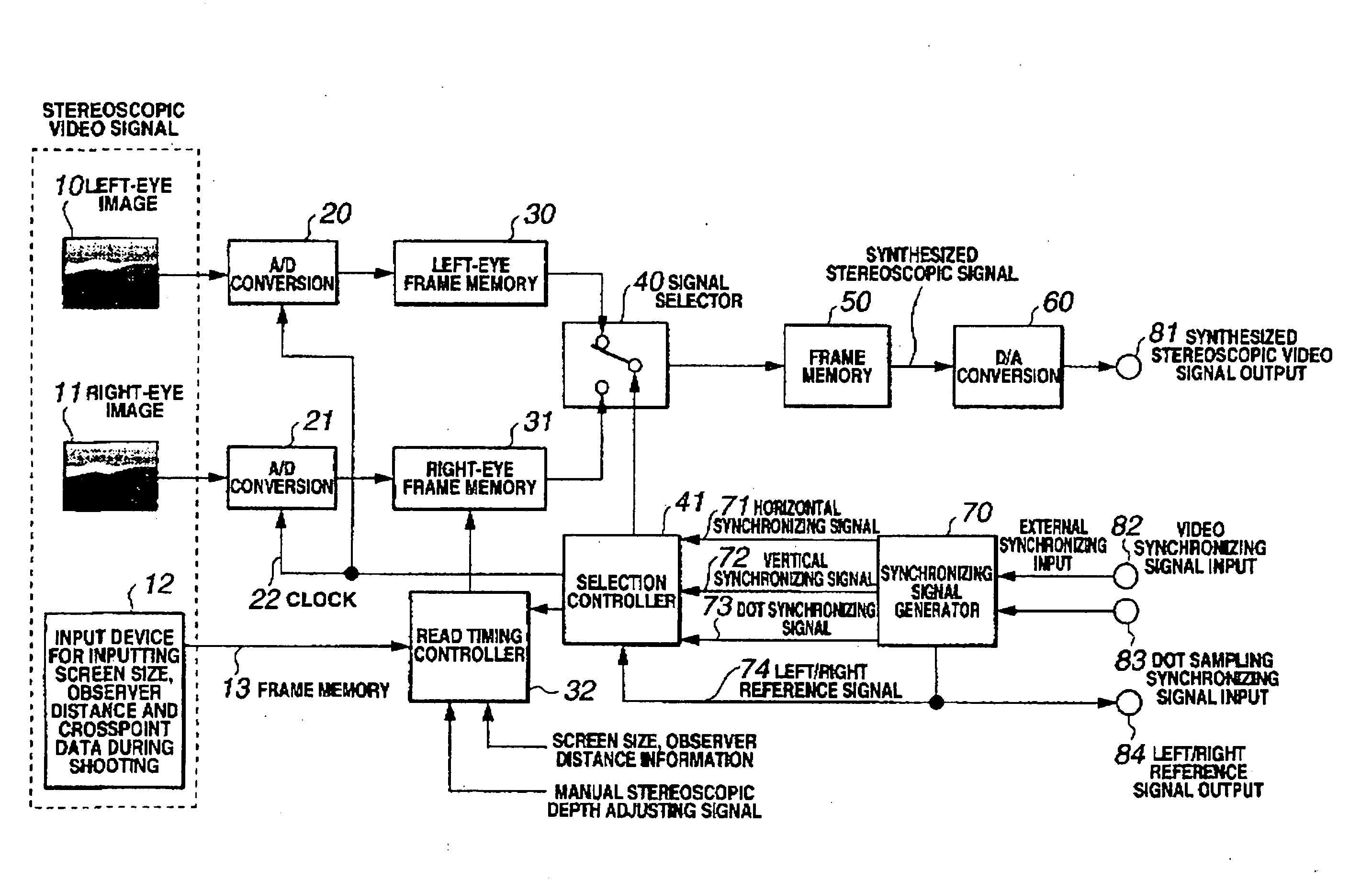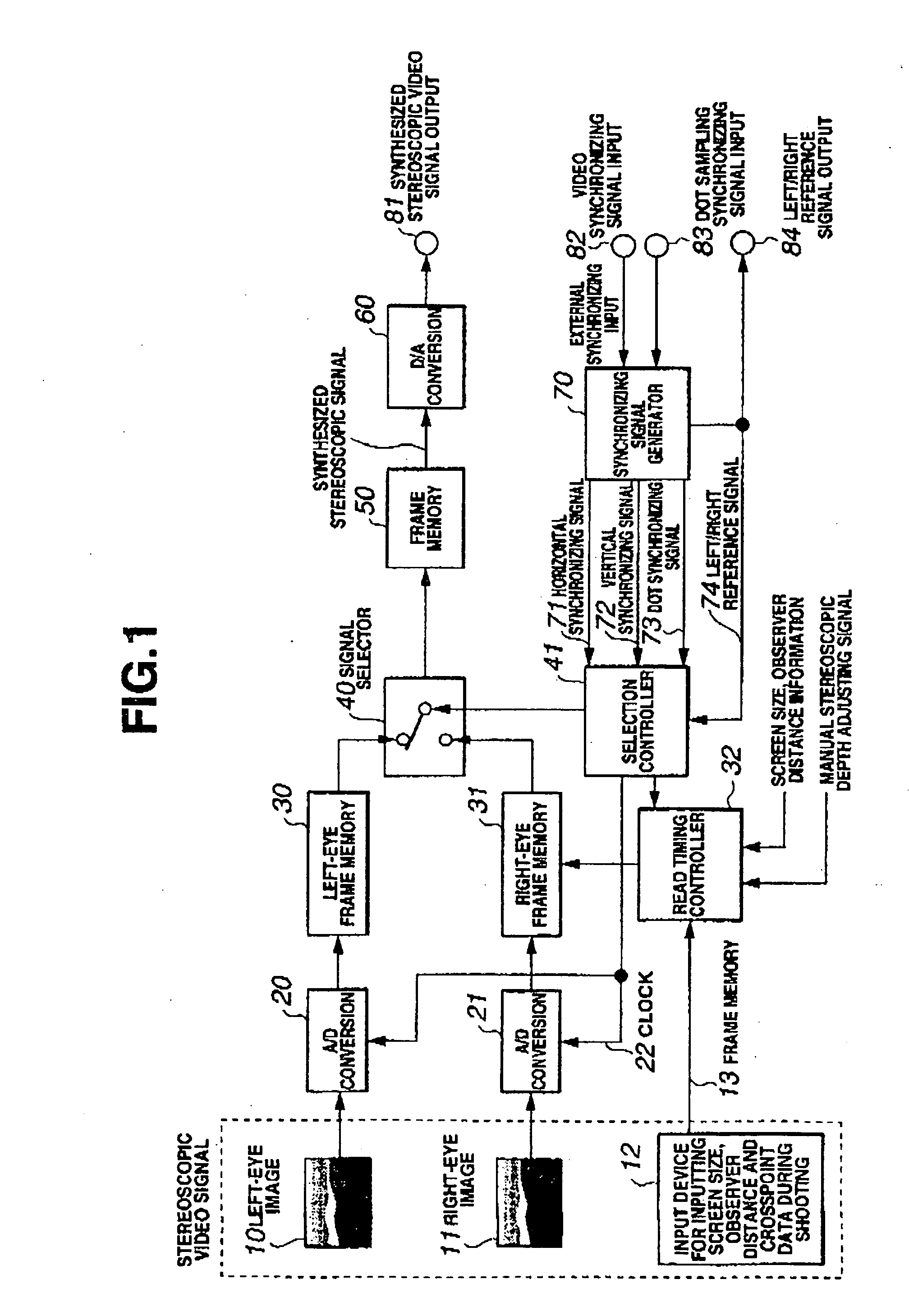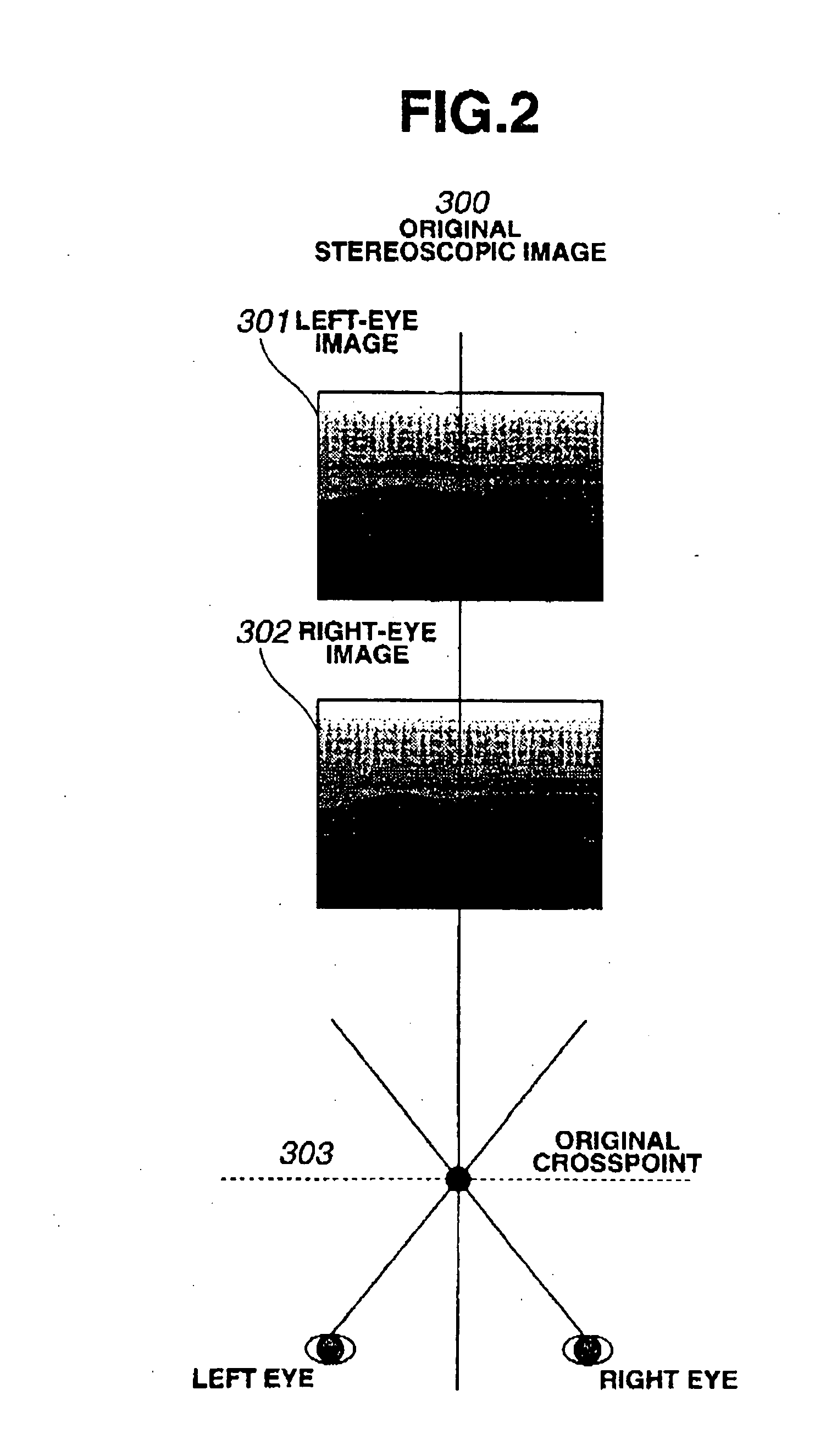There dimensional image signal producing circuit and three-dimensional image display apparatus
a three-dimensional image and signal technology, applied in the field of display, can solve the problems of not being able to view with correct stereoscopic depth, unable to produce a realistic stereoscopic view for all screen sizes, and unable to achieve the effect of achieving stereoscopic depth,
- Summary
- Abstract
- Description
- Claims
- Application Information
AI Technical Summary
Benefits of technology
Problems solved by technology
Method used
Image
Examples
Embodiment Construction
[0048] Embodiments of the present invention will be described by referring to the accompanying drawings.
[0049]FIG. 1 is a block diagram showing the configuration of a stereoscopic video signal generation circuit according to one embodiment of this invention.
[0050] The stereoscopic video signal generation circuit according to one embodiment of this invention receives, as data recorded during shooting, a left-eye image 10, a right-eye image 11, and a distance to crosspoint (CP information) 13. The left-eye image 10 is shot by a left-eye camera and the right-eye image 11 by a right-eye camera arranged side by side with the left-eye camera. The left-eye camera and the right-eye camera are inclined toward each other, i.e., they are shifted from their parallel positions where their optical axes are parallel, so that their optical axes cross each other. A point where the cameras' optical axes cross is a crosspoint (CP) located on an object plane. During shooting, the camera equipment mea...
PUM
 Login to View More
Login to View More Abstract
Description
Claims
Application Information
 Login to View More
Login to View More - R&D
- Intellectual Property
- Life Sciences
- Materials
- Tech Scout
- Unparalleled Data Quality
- Higher Quality Content
- 60% Fewer Hallucinations
Browse by: Latest US Patents, China's latest patents, Technical Efficacy Thesaurus, Application Domain, Technology Topic, Popular Technical Reports.
© 2025 PatSnap. All rights reserved.Legal|Privacy policy|Modern Slavery Act Transparency Statement|Sitemap|About US| Contact US: help@patsnap.com



